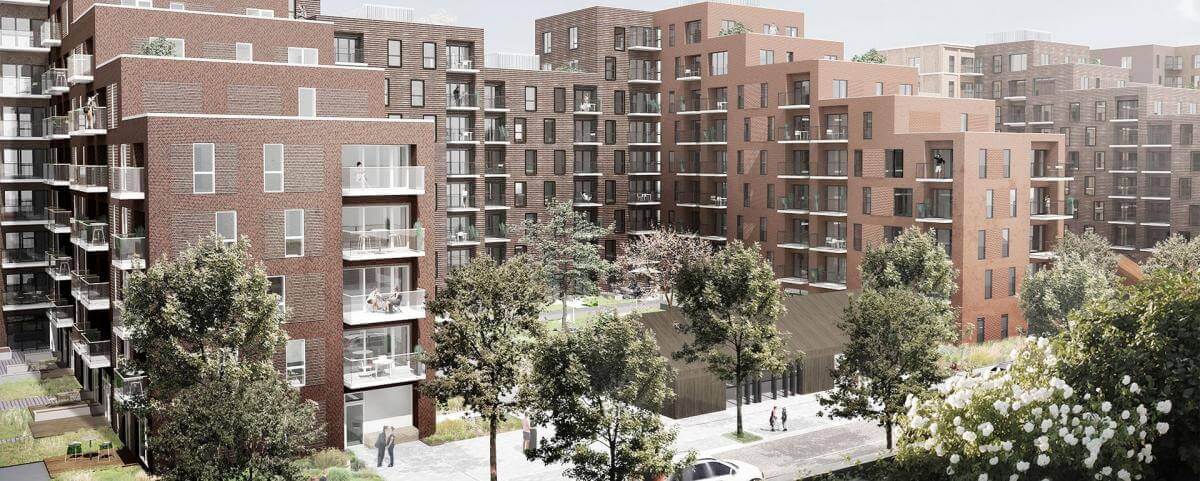Dynamics
Dynamics calculation possibilities in FEM-Design includes footfall analysis, seismic analysis and stability analysis.
Footfall Analysis
This calculation method allows for checking a structure’s response for an exciting vibration. You can select one of the three available methods: self excitation, full excitation or rhythmic crowd load (the load case must be selected with this method).
Watch a Webinar about Footfall Analysis
Seismic Analysis
FEM-Design supports you to perform seismic analysis with the following methods of seismic dynamics calculations according to Eurocode 8.
- Modal response spectrum analysis (“Modal analysis”)
- Linear shape method (Static, linear shape)
- Mode shape method (Static, mode shape)
Seismic Loads
Seismic loads are taken into account according to the Response Spectrum Analysis method of Eurocode 8 or Turkish seismic code. Only the response spectrum and some additional parameters have to be defined as Seismic load. Required spectrums can be defined with the Seismic load by using standard spectra (automatic) or by manual definition (unique).
Results
Besides displacements, reactions, connection forces, and internal forces, the program calculates the equivalent loads and the “base shear force”. Results can be displayed by vibration shape (selected at calculation settings), from torsional effect, from sums by direction and from the total sum (seismic max).
If equivalent loads are displayed, also the “base shear force” appears on screen (in grey colour). Torsional moment effect on the whole structure can also be displayed, if the torsional effect was taken into consideration during the calculation.
Watch the Seismic Analysis Overview Video
Stability Analysis
In the description of the second-order theory, it was pointed out that the resultant stiffness of the system depends on the normal force distribution. In case of linear elastic structures the geometrical stiffness matrix is a linear function of normal forces and consequently of loads:
KG (λN) = λ KG
The structure loses its loadbearing capability if the normal forces decrease the stiffness to zero, i.e. the resultant stiffness matrix becomes singular:
det [K + λ KG (N)] = 0
It is an eigenvalue calculation problem, and the smallest λ eigenvalue is the critical load parameter.
The calculation has to be performed in two steps.
First, the normal forces of the elements have to be calculated by using the K matrix.
In the second step KG and the λ parameter can be determined.
The critical load is the product of the load and the λ parameter. The above-mentioned eigenvalue problem is solved by the so-called Lanczos method in FEM-Design. The results of the calculations are as many buckling shapes as the user required and the matching λ critical load parameters.
Watch a Webinar on Stability Analysis
Why wait? Download an automated 2 x week free trial of FEM-Design and get started today!
Calculations performed according to:
Euro Code
Belgian National Annex
British National Annex
Danish National Annex
Dutch National Annex
Estonian National Annex
Finnish National Annex
German National Annex
Hungarian National Annex
Latvian National Annex
Norwegian National Annex
Polish National Annex
Romanian National Annex
Spanish National Annex
Swedish National Annex
Turkish Seismic Code
Languages supported:
English
Finnish
French
Dutch
Hungarian
Polish
FEM-Design Wiki
FEM-Design allows you to perform numerous dynamics calculations: displacement, internal forces, stresses, stability, imperfections, stability analysis, eigenfrequencies and/or seismic analysis. Some extra settings such as cracked-section analysis, non-linear behaviour etc. are also available for certain modules.
Full details on all the Dynamics Analysis Types can be found on the FEM-Design Wiki by clicking here.
FEM-Design Blog
GRC Structural Design using FEM-Design software
One of Denmark's leading manufacturers of glass fibre reinforced concrete, BB Fiberbeton A/S, have just completed a prestigious GRC structural design project. The Danish [...]
Structural analysis of a new floodgate hatch at Höljes hydroelectric power plant
The Höljes power plant in Sweden is a hydroelectric power station built in 1962. The new gate is 9 meters high, 17 meters wide, [...]
Stabilising façades as shear walls with windows to floor level is a challenge
Architects' passion for large windows presents challenging design issues for structural engineers. They need to ensure stability in the longitudinal direction of the building. [...]



















